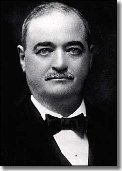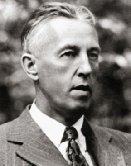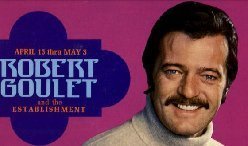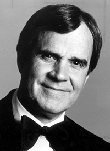
Prayers of thanks and special thanksgiving ceremonies are common among almost all religions after harvests and at other times. The Thanksgiving holiday's history in North America is rooted in English traditions dating from the Protestant Reformation. It also has aspects of a harvest festival, even though the harvest in New England occurs well before the late-November date on which the modern Thanksgiving holiday is celebrated.
In the English tradition, days of thanksgiving and special thanksgiving religious services became important during the English Reformation in the reign of Henry VIII and in reaction to the large number of religious holidays on the Catholic calendar. Before 1536 there were 95 Church holidays, plus 52 Sundays, when people were required to attend church and forego work and sometimes pay for expensive celebrations. The 1536 reforms reduced the number of Church holidays to 27, but some Puritans wished to completely eliminate all Church holidays, including Christmas and Easter. The holidays were to be replaced by specially called Days of Fasting or Days of Thanksgiving, in response to events that the Puritans viewed as acts of special providence. Unexpected disasters or threats of judgement from on high called for Days of Fasting. Special blessings, viewed as coming from God, called for Days of Thanksgiving. For example, Days of Fasting were called on account of drought in 1611, floods in 1613, and plagues in 1604 and 1622. Days of Thanksgiving were called following the victory over the Spanish Armada in 1588 and following the deliverance of Queen Anne in 1705. An unusual annual Day of Thanksgiving began in 1606 following the failure of the Gunpowder Plot in 1605 and developed into Guy Fawkes Day on November 5.
Capture the full flavor of Grandma's home with these delicious Mini Apple Pies! This quick and easy recipe will fill the house with the glorious scent of apples and cinnamon for that true home cookin' feeling.
- 2 Granny Smith apples, peeled, cored, and cut into small cubes
- 1 tablespoon sugar
- 1/2 teaspoon cinnamon
- 1/4 teaspoon nutmeg
- 1 teaspoon lemon juice
- 1 tablespoon butter
- 2 tablespoons chopped pecans
- 1 (7.5-ounce) package refrigerated biscuits (10 biscuits)
- Preheat oven to 425º. In a medium bowl, combine apples, sugar, cinnamon, nutmeg, and lemon juice.
- In a large skillet over medium heat, melt butter; add apple mixture and cook 5 minutes, or until apples are soft, stirring occasionally. Remove from heat and stir in pecans.
- Place biscuits on a flat surface and press with fingertips to flatten. Equally divide the apple mixture into the center of each biscuit and fold dough over to form a half moon. Using a fork, crimp the edges to seal, then place on a baking sheet.
- Bake 8 to 10 minutes, or until golden brown.

In many American households, the Thanksgiving celebration has lost much of its original religious significance; instead, it now centers on cooking and sharing a bountiful meal with family and friends. Turkey, a Thanksgiving staple so ubiquitous it has become all but synonymous with the holiday, may or may not have been on offer when the Pilgrims hosted the inaugural feast in 1621. Today, however, nearly 90 percent of Americans eat the bird—whether roasted, baked or deep-fried—on Thanksgiving, according to the National Turkey Federation. Other traditional foods include stuffing, mashed potatoes, cranberry sauce, and pumpkin pie. Volunteering is a common Thanksgiving Day activity. Communities often hold food drives and host free dinners for the less fortunate.
Parades have also become an integral part of the holiday in cities and towns across the United States. Presented by Macy’s department store since 1924, New York City’s Thanksgiving Day parade is the largest and most famous, attracting some 2 to 3 million spectators along its 2.5-mile route and drawing an enormous television audience. It typically features marching bands, performers, elaborate floats conveying various celebrities and giant balloons shaped like cartoon characters.
Beginning in the mid-20th century and perhaps even earlier, the president of the United States has “pardoned” one or two Thanksgiving turkeys each year, sparing the birds from slaughter and sending them to a farm for retirement. Several U.S. governors also perform the annual turkey pardoning ritual, too
THANKSGIVING DAY HISTORY
Plymouth
In September 1620, a small ship called the Mayflower left Plymouth, England. The ship carried 102 passengers—an assortment of religious separatists seeking a new home where they could freely practice their faith and other individuals lured by the promise of prosperity and land ownership in the New World. After a treacherous and uncomfortable crossing that lasted 66 days, they dropped anchor near the tip of Cape Cod, far north of their intended destination at the mouth of the Hudson River. One month later, the Mayflower crossed Massachusetts Bay, where the Pilgrims, as they are now commonly known, began the work of establishing a village at Plymouth.
Throughout that first brutal winter, most of the colonists remained on board the ship. They suffered from exposure, scurvy, and outbreaks of contagious disease. Only half of the Mayflower’s original passengers and crew lived. When the remaining settlers moved ashore in March, they received an astonishing visit. An Abenaki Indian greeted them in English. Several days later, he returned with another Native American named Squanto.
Squanto was a member of the Pawtuxet tribe, had been kidnapped by an English sea captain and sold into slavery before escaping to London and returning to his homeland on an exploratory expedition. Squanto taught the Pilgrims, weakened by malnutrition and illness, how to cultivate corn, extract sap from maple trees, catch fish in the rivers and avoid poisonous plants. He also helped the settlers forge an alliance with the Wampanoag, a local tribe. The alliance would endure for more than 50 years, and tragically remains one of the sole examples of harmony between European colonists and Native Americans.
First Thanksgiving
In November 1621, after the first successful corn harvest, Governor William Bradford organized a celebratory feast. He invited a group of the fledgling colony’s Native American allies, including the Wampanoag chief Massasoit. Now remembered as American’s “first Thanksgiving”—although the Pilgrims themselves may not have used the term at the time—the festival lasted for three days. While no record exists of the historic banquet’s menu, the Pilgrim chronicler Edward Winslow wrote in his journal that Governor Bradford sent four men on a “fowling” mission in preparation for the event and that the Wampanoag guests arrived bearing five deer. Historians suggest that many of the dishes likely used traditional Native American spices and cooking methods. Because the Pilgrims had no oven and the Mayflower’s sugar supply had dwindled by the fall of 1621, the meal did not feature pies, cakes or other desserts, which have become a hallmark of contemporary celebrations.
The Next Thanksgivings
Pilgrims held their second Thanksgiving celebration in 1623 to mark the end of a long drought that had threatened the year’s harvest and prompted Governor Bradford to call for a religious fast. Days of fasting and thanksgiving on an annual or occasional basis became common practice in other New England settlements as well. During the American Revolution, the Continental Congress designated one or more days of thanksgiving a year. In 1789 George Washington issued the first Thanksgiving proclamation by the national government of the United States; in it, he called upon Americans to express their gratitude for the happy conclusion to the country’s war of independence and the successful ratification of the U.S. Constitution. His successors John Adams and James Madison also designated days of thanks during their presidencies.
In 1817, New York became the first of several states to adopt an annual Thanksgiving holiday officially; each celebrated it on a different day, however, and the American South remained largely unfamiliar with the tradition.














1 comment:
HAPPY THANKSGIVING!
Next year is the 400th anniversary of the first Thanksgiving. I believe my friend Bob is descendent of both Warren and Bradford Mayflower families. The menu of what was common then to eat does not resemble our fantasy modern meal.
What he has said would be most important about the lesson of our founding is the importance of working together for a common cause. If the Indians had not welcomed the off-course travelers (they planned to arrive weeks earlier in more hospitable Virginia, but a raging storm blew them far north) all would have perished: not just half.
Godspeed, good health and happiness fill our hearts with joy.
Post a Comment